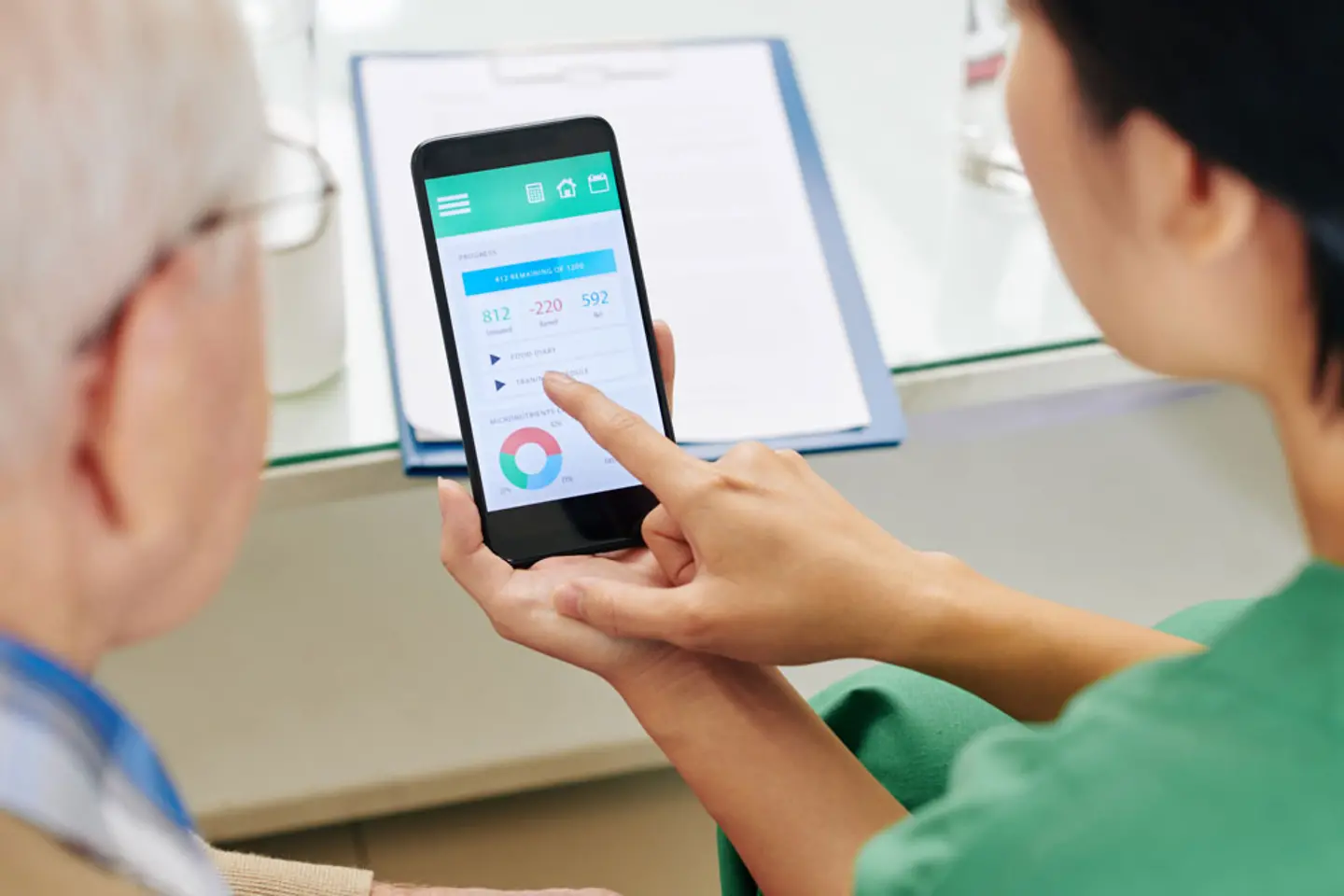
Behind the scenes, software and connected healthcare platforms have become key drivers for provider efficiency and patient welfare.
Medical professionals all over the world have held the line against the pandemic, continuing to provide essential services under a tremendous amount of stress.
Doctors, nurses, and their support staff have been working tirelessly to keep up with rising COVID-19 infection rates, allocating limited resources against an endless intake of patients. They’ve been ably supported by new digital services working in the background, helping them overcome the pandemic’s challenges in surprising ways.
Though unseen, digitalisation and data have become indispensable core components of the health system. Behind the scenes, software and connected systems have become key drivers for both provider efficiency and patient welfare.

The pandemic is only the most prominent factor in a series of converging issues facing the medical sector today.
First, an ageing population in the Asia- Pacific region (APAC) has caused healthcare expenditures to rise sharply in the medium term. The region has the fastest-ageing population in the world, with over 200 million people expected to move into the ranks of the elderly (aged 65 years and above) between 2016 and 2030. This will lead to a five-fold rise in APAC’s annual cost of elderly healthcare, from US$500 billion in 2015 to US$2.5 trillion in 2030.
The pandemic-induced increase in workload and personnel turnover of the past two years have also sparked higher stress levels for remaining frontliners. Up to 75% of healthcare workers in Singapore surveyed were at risk of burnout, and showed signs of disengagement and exhaustion. And that has dire implications for patient care as well; stressed nurses are between 31% and 62% more likely to make medical errors.
Novel, digitalised healthcare solutions are already helping frontliners meet these challenges head-on, and administrators are taking note. An estimated 65% of hospitals in APAC are increasing spending on digitalisation, in response to rising regional demand.
A majority of the region’s patients are receptive to new healthcare technologies, and are ready to explore the digital health options available to them. For example, 66% of patients in Southeast Asia already prefer remote video-call consultations over face-to-face consultations with doctors.

All told, the value of Asia’s digital health ecosystems may jump from US$37 billion in 2020 to US$100 billion in value by 2025. These increasing investments in digitalised healthcare solutions are not intended to replace frontliners, but to support their work: lowering exhaustion levels, increasing their capacity and helping to deliver better patient experiences and outcomes.
These solutions come in many forms, from the Internet of Medical Things to wearables to cloud-based healthcare platforms. They all add up to a digital and data-driven health system that enables faster detection and better monitoring of diseases, greatly reducing costs and inefficiencies within the health system – all for the benefit of administrators, healthcare workers and patients alike.
APAC hospitals like Singapore's Raffles Medical Group have poured significant investments into SAP for Healthcare, i.s.h.med, and other digitalised healthcare tools. Expectations are high from all parties involved; how far do these new digital platforms go to meet them?

The information age has raised patients’ expectations of care. Patients feel empowered to take control of their own treatments; a Bain study found that over 70% of consumers researched symptoms and treatments online, and 60% used technology to monitor their health.
To serve informed and empowered patients, healthcare staff must be able to rapidly diagnose issues, and recommend best treatment plans and medication. To deliver on these high expectations, frontliners in turn demand virtual platforms that provide accurate patient data at a moment’s notice.
In an ideal situation, a doctor might meet the patient with their historical patient data already at their fingertips on a digital dashboard. The dashboard can lighten the doctor’s load, alerting them of potential drug risks; and otherwise allowing doctors and other staff to make informed decisions about patient care on the fly.
These expectations are already being met by APAC hospitals implementing tools like SAP for Healthcare on Azure Public Cloud, a single platform solution for healthcare-based digital services; along with i.s.h. med and Medi-Span Clinical by Wolters Kluwer, a SAP-integrated hospital information system and an accompanying leading clinical decision support application that helps i.s.h. med identify potential medication errors, inappropriate dosing and avoid adverse events.
Healthcare facilities that have integrated Medi-Span Clinical into their EMRs (electronic medical records) bring trusted, actionable drug data directly in their clinicians’ workflow. The platform’s drug data and clinical screening modules support appropriate medication decisions, help reduce prescribing errors, and optimise alert systems based on clinical context to help reduce “alert fatigue.” This allows clinicians to focus on treatment, and put their patients at the centre of their clinical decisions.

Both patients and clinicians have an interest in reducing healthcare red tape. Patients want to spend less time filling out paperwork, waiting for release forms, and chasing signatures from healthcare providers.
Medical frontliners would like to spend less time updating EHRs (Electronic Health Records) overall; a recent study supports a strong link between EHR usability and clinician burnout. A 2016 study found that U.S. physicians were spending two hours on patient paperwork for every hour they were seeing patients.
Digital platforms like SAP Electronic Medical Records and Business Process Management can bridge the efficiency gap, generating operational and clinical information in real time, not just EHRs; SAP-based medical platforms can also manage electronic documentation for billing, procurement, drug inventory, and financials.
For patients, this means the ability to pre-register online or do a self check-in, reducing waiting times; or enjoy faster claims processing and payments on a convenient patient dashboard. For doctors, having reliable real-time operational and clinical information can facilitate faster and more accurate decision-making.

The 2018 SingHealth data hack, which exposed the personal health information of the Singapore Prime Minister and 1.5 million other patients, was the country’s worst ever cyber attack. The consequences were just as record-breaking; the government imposed fines totalling S$1 million, the highest ever to date.
Hospitals shudder at the thought of suffering a similar fate; digitalised healthcare platforms must therefore prioritise patient data privacy, and ensure that data remains available only to authorised personnel.
This is harder than it looks. Frontliners and support staff must balance availability of patient data with the need to protect data privacy – not just to earn trust from patients, but also to counter heavy sanctions from relevant data privacy laws in their country.
A digital transformation expert can guide hospitals as they implement digitalised healthcare solutions. With expert advice in hand, administrators can decide how to replace legacy systems that are more vulnerable to cyber attack; and implement data protection measures in their new digital platforms from the ground up. In the end, they’ll be able to avoid cyber attacks and their million-dollar consequences.
In the short term, digitalisation in healthcare has helped today’s hospitals overcome the recent pandemic-induced healthcare crisis. It looks to do far more in the long run: digital transformation of the medical sector can help accelerate an ongoing mindset shift.
The pandemic has forced healthcare decision-makers to broaden their view of what healthcare should deliver. Some have turned their attention to “population health”, or managing the overall health of a defined community. Administrators are also increasingly prioritising the delivery of optimal patient experiences, due to its connection to higher profitability.
Working silently and efficiently in the background, digitalised healthcare platforms can help healthcare decision-makers rebalance their priorities: delivering high-quality, affordable, broad-based healthcare, with positive results that far outweigh the initial investment.
Digitalised healthcare can lower cost, counter shortages in resources and talent, and even deploy analytical capabilities that can predict future outbreaks, manage preventable diseases, and improve the community’s quality of life.
To bring these solutions to life, APAC hospitals are teaming up with digitalisation partners like T-Systems to implement data analytics, the Internet of Things (IoT), and machine-to-machine (M2M) communication; all to open new frontiers in medicine that we are only beginning to imagine right now.
Find out how we’re helping to drive digitalisation in health ecosystems across the Asia-Pacific, with success stories from hospitals in Singapore and Indonesia.